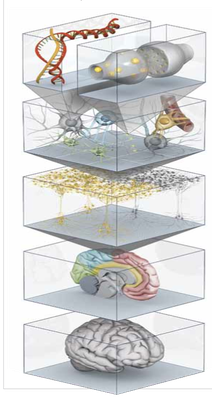“Ke Ye Toota Hua Tara Mah-e-Kamil Na Ban Jaye”, referred to the progression of human kind by Iqbal in his poetic collection ‘Bal-e- Jibril” (Gabriel’s wings). This verse always developed the sense of superiority in me for being one of humankind with infinite abilities to explore and analyze. However, after taking TnT class about the advent of AI and its implications, this verse has a new meaning for me. Now when I think about the meaning of this verse I feel threatened and intimidated by future possibilities of AI.
I admit that in class when we were introduced to AI projects I was truly amazed by AI based project such as OLLI. It was so fascinating that I even had a dream about riding it that night , however, I with some other passengers drowned in a lake as there was some technical issue with Olli and we couldn’t even get out. Well, as I mentioned earlier, fear in my subconscious mind must have played the role in unhappy ending. However, my fear is not merely skeptical as Prof. Stephen Hawkings Late, mentioned this possibility in his interview with BBC. “The development of full artificial intelligence could spell the end of the human race.” With this insight Prof. Hawkings and many other experts of AI wrote and open letter to the future designers of AI technologies.

The letter highlights both the positive and negative effects of artificial intelligence.] The letter contends that:
The potential benefits (of AI) are huge, since everything that civilization has to offer is a product of human intelligence; we cannot predict what we might achieve when this intelligence is magnified by the tools AI may provide, but the eradication of disease and poverty are not unfathomable. Because of the great potential of AI, it is important to research how to reap its benefits while avoiding potential pitfalls.
https://en.wikipedia.org/wiki/Foundational_Questions_Institute
On the bright side Artificial Intelligence being the endeavor to replicate or simulate human intelligence in machines seems promising in its current form and course. It has provided solutions to diverse issues and is striving to provide comfort and improved lifestyle for humans. A few such examples were mentioned in class e.g. watch list recommendations on Netflix, social media monitors for false or dangerous content, spam filters, robo advisors for stock exchange, drone- robots, disease mapping tools, smart assistants, conversational bots for marketing and customer service. olli, google watson etc.
Here I would specifically mention another project by google- Human Brain Project. Funded by European union, this project began in 2013 and directly employs some 500 scientists at more than 100 universities, teaching hospitals, and research centres across Europe.
Six ICT research Platforms form the heart of the HBP infrastructure:
- Neuroinformatics (access to shared brain data)
- Brain Simulation (replication of brain architecture and activity on computers)
- High Performance Analytics and Computing (providing the required computing and analytics capabilities)
- Medical Informatics (access to patient data, identification of disease signatures)
- Neuromorphic Computing (development of brain-inspired computing)
- Neurorobotics (use of robots to test brain simulations)
The HBP also undertakes targeted research and theoretical studies, and explores brain structure and function in humans, rodents and other species. In addition, the Project studies the ethical and societal implications of HBP’s work.

The HBP is trying bridge the scales of brain research from the level of the synapses and genes to the whole brain and human behaviour.
The Project is divided into 12 Subprojects. Six of these develop ICT-based platforms (Subprojects 5-10), which consist of prototype hardware, software, databases, and programming interfaces. These tools are available to researchers worldwide via the HBP Collaboratory. Three Subprojects gather data on empirical neuroscience and establish theoretical foundations (Subprojects 1-4) and one is responsible for ethics and society (Subproject 12). Subproject 11 coordinates the project.
- SP1 Mouse Brain Organisation: Understanding the structure of the mouse brain, and its electrical and chemical functions
- SP2 Human Brain Organisation: Understanding the structure of the human brain, and its electrical and chemical functions
- SP3 Systems and Cognitive Neuroscience: Understanding how the brain performs its systems-level and cognitive functional activities
- SP4 Theoretical Neuroscience: Deriving high-level mathematical models to synthesize conclusions from research data
- SP5 Neuroinformatics Platform: Gathering, organising and making available brain data
- SP6 Brain Simulation Platform: Developing data-driven reconstructions of brain tissue and simulation capabilities to explore these reconstructions
- SP7 High-performance Analytics and Computing Platform: Providing the ICT capability to map the brain in unprecedented detail, construct complex models, run large simulations, and analyse large volumes of data
- SP8 Medical Informatics Platform: Developing the infrastructure to share hospital and medical research data for the purpose of understanding disease clusters and their respective disease signatures
- SP9 Neuromorphic Computing Platform: Developing and applying brain-inspired computing technology
- SP10 Neurorobotics Platform: Developing virtual and real robots and environments for testing brain simulations
- SP11 Management and Coordination: General coordination of the project
- SP12 Ethics and Society: Exploring the ethical and societal impact of HBP’s work
No one e can deny the revolutionary service of AI, however, it is i the benefit of humanity to construct machines that can be controlled, in other words, somewhat less smarter than Humans. What do you think???

